The AI Revolution in Treasury Management: From Theory to Practice


Treasury is experiencing a seismic shift. What was once a gradual evolution toward digital transformation has accelerated into an AI-driven revolution that's reshaping how finance teams operate, analyze, and make decisions. The numbers tell a compelling story: 79% of CFOs plan to increase AI budgets in 2025, and 94% expect generative AI to strongly benefit finance operations.
This isn't just about automation anymore. It's about amplifying human intelligence to create unprecedented levels of strategic insight and operational efficiency.
The Momentum Behind AI in Treasury
The transformation happening in treasury management has been exponential. In just one year, AI adoption in finance functions jumped from 37% to 58%, demonstrating the classic steep curve of innovation adoption. We're seeing the market separate into leaders and followers, with early adopters already seeing 20% to 30% reductions in operational costs.
But what's driving this unprecedented consensus among finance leaders? The answer lies in proven results of organizations that have successfully integrated AI into their treasury operations, rather than theoretical potential:
- Forecasting accuracy improvements of 30%
- Month-end close processes accelerated by days
- Board reporting reduced from weekends to minutes
Beyond Black Boxes: The Need for Transparent AI
One critical insight emerging from this transformation is that CFOs demand more than just powerful AI: they want AI they can trust and understand. The most successful AI implementations in treasury share three key characteristics:
- Explainability: Every AI recommendation comes with clear reasoning and transparent decision-making processes.
- Diversity of Approach: Rather than forcing one AI model onto every problem, leading solutions use statistical modeling for trends, fuzzy logic for pattern matching, and agentic AI for intelligent decision support.
- Proven Integration: The most effective AI solutions build on years of experience in treasury workflows, understanding not just what's technically possible, but what treasury teams actually need.
The Rise of Agentic AI in Treasury
Traditional AI automation focused on replacing human tasks. However, the new paradigm centers on Agentic AI, specialized AI workers that reason through problems, discover patterns, and recommend actions while keeping humans firmly in the decision loop.
This approach recognizes the future Office of the CFO won't be defined by which tasks get automated, but by what insights get surfaced, what decisions get accelerated, and what strategies get enabled when talented professionals are freed from operational toil.
Real-World Impact: From Theory to Practice
Consider a typical treasury analyst's Thursday routine: generating forecast comparison reports, exporting to Excel, analyzing variances line by line, writing executive summaries, and formatting presentations. This process consumes 4-8 hours weekly, equivalent to two full months annually spent on manual analysis.
Modern AI solutions are transforming this workflow from an 8-hour marathon into a 15-minute sprint, while simultaneously improving accuracy and insight quality.
The Four Pillars of Successful Treasury AI Implementation
Organizations successfully leveraging AI in treasury operations follow four key principles:
1. AI-First Mindset
Product teams use AI throughout their entire workflow from initial requirements writing to rapid prototyping to user story creation. The shift moves professionals from manual work to strategic thinking.
2. Culture of Experimentation
Successful organizations run AI workshops and hackathons, but they don't chase every technological trend. They fail fast, learn faster, and scale what works using a simple framework: Is it high frequency? Is it high pain? Is it ripe for AI amplification?
3. Outcome-Driven Innovation
The most effective AI implementations focus on measurable business outcomes rather than technological capabilities. They prioritize use cases where someone spends significant time on analysis that could be accelerated through AI assistance.
4. Customer-Centric Development
Every AI feature starts with customer conversations. Early access programs become co-creation opportunities, ensuring that AI solutions address real business challenges rather than theoretical problems.
Data Security and Trust: The Foundation of Treasury AI
Implementing AI in treasury requires addressing the fundamental concern of data security and trust. Leading AI solutions in treasury are built on four critical principles:
- Complete Data Isolation: Client data remains in dedicated repositories with no cross-tenant sharing or co-processing.
- Inference-Only Operations: AI applies intelligence to data without learning from it, ensuring proprietary information never becomes part of model training.
- Geographic Control: Data remains within specified regions (US, EU, APAC) according to organizational requirements.
- Full Transparency: Organizations maintain complete visibility into AI operations, with every output including transparent reasoning and justification.
The Future of Treasury AI: From Reactive to Predictive
The next evolution in treasury AI moves beyond automating existing processes to fundamentally reimagining how treasury functions operate. Instead of finding risk policy breaches after month-end, AI can continuously monitor exposures and alert teams before violations occur.
Rather than generating static compliance reports quarterly while markets move daily, AI enables real-time policy monitoring with dynamic risk assessment.
This shift from reactive to predictive treasury management represents the true value proposition of AI: not just doing things faster but doing them better and with greater strategic insight.
Getting Started: Practical Steps for Treasury AI Adoption
For treasury leaders considering AI adoption, the journey begins with conviction rather than technology:
- Assess Current Pain Points: Identify high-frequency, high-pain processes that consume significant analytical time
- Start with Proven Solutions: Begin with AI capabilities that have demonstrated success in similar treasury environments
- Prioritize Transparency: Choose AI solutions that provide clear reasoning and maintain human decision-making authority
- Ensure Robust Security: Verify that AI implementations meet enterprise-grade data security and governance requirements
- Plan for Integration: Consider how AI tools will work within existing treasury workflows and systems
The Strategic Imperative
With many organizations now having their CEO personally oversee AI governance, it's clear that AI transformation is organizational transformation.
The organizations succeeding with AI aren't necessarily those with the biggest budgets: they're the ones who understand that AI must deliver clarity and insight that finance teams can act on within days, not months.
The future belongs to finance leaders who recognize that AI isn't about replacing human expertise. It's about amplifying it to create unprecedented levels of strategic insight and operational excellence. In treasury management, that future is already beginning to unfold.
Learn how your treasury team can continue to evolve with the power of GSmart AI from GTreasury by scheduling a consultation with our team today.
The AI Revolution in Treasury Management: From Theory to Practice
Treasury is experiencing a seismic shift. What was once a gradual evolution toward digital transformation has accelerated into an AI-driven revolution that's reshaping how finance teams operate, analyze, and make decisions. The numbers tell a compelling story: 79% of CFOs plan to increase AI budgets in 2025, and 94% expect generative AI to strongly benefit finance operations.
This isn't just about automation anymore. It's about amplifying human intelligence to create unprecedented levels of strategic insight and operational efficiency.
The Momentum Behind AI in Treasury
The transformation happening in treasury management has been exponential. In just one year, AI adoption in finance functions jumped from 37% to 58%, demonstrating the classic steep curve of innovation adoption. We're seeing the market separate into leaders and followers, with early adopters already seeing 20% to 30% reductions in operational costs.
But what's driving this unprecedented consensus among finance leaders? The answer lies in proven results of organizations that have successfully integrated AI into their treasury operations, rather than theoretical potential:
- Forecasting accuracy improvements of 30%
- Month-end close processes accelerated by days
- Board reporting reduced from weekends to minutes
Beyond Black Boxes: The Need for Transparent AI
One critical insight emerging from this transformation is that CFOs demand more than just powerful AI: they want AI they can trust and understand. The most successful AI implementations in treasury share three key characteristics:
- Explainability: Every AI recommendation comes with clear reasoning and transparent decision-making processes.
- Diversity of Approach: Rather than forcing one AI model onto every problem, leading solutions use statistical modeling for trends, fuzzy logic for pattern matching, and agentic AI for intelligent decision support.
- Proven Integration: The most effective AI solutions build on years of experience in treasury workflows, understanding not just what's technically possible, but what treasury teams actually need.
The Rise of Agentic AI in Treasury
Traditional AI automation focused on replacing human tasks. However, the new paradigm centers on Agentic AI, specialized AI workers that reason through problems, discover patterns, and recommend actions while keeping humans firmly in the decision loop.
This approach recognizes the future Office of the CFO won't be defined by which tasks get automated, but by what insights get surfaced, what decisions get accelerated, and what strategies get enabled when talented professionals are freed from operational toil.
Real-World Impact: From Theory to Practice
Consider a typical treasury analyst's Thursday routine: generating forecast comparison reports, exporting to Excel, analyzing variances line by line, writing executive summaries, and formatting presentations. This process consumes 4-8 hours weekly, equivalent to two full months annually spent on manual analysis.
Modern AI solutions are transforming this workflow from an 8-hour marathon into a 15-minute sprint, while simultaneously improving accuracy and insight quality.
The Four Pillars of Successful Treasury AI Implementation
Organizations successfully leveraging AI in treasury operations follow four key principles:
1. AI-First Mindset
Product teams use AI throughout their entire workflow from initial requirements writing to rapid prototyping to user story creation. The shift moves professionals from manual work to strategic thinking.
2. Culture of Experimentation
Successful organizations run AI workshops and hackathons, but they don't chase every technological trend. They fail fast, learn faster, and scale what works using a simple framework: Is it high frequency? Is it high pain? Is it ripe for AI amplification?
3. Outcome-Driven Innovation
The most effective AI implementations focus on measurable business outcomes rather than technological capabilities. They prioritize use cases where someone spends significant time on analysis that could be accelerated through AI assistance.
4. Customer-Centric Development
Every AI feature starts with customer conversations. Early access programs become co-creation opportunities, ensuring that AI solutions address real business challenges rather than theoretical problems.
Data Security and Trust: The Foundation of Treasury AI
Implementing AI in treasury requires addressing the fundamental concern of data security and trust. Leading AI solutions in treasury are built on four critical principles:
- Complete Data Isolation: Client data remains in dedicated repositories with no cross-tenant sharing or co-processing.
- Inference-Only Operations: AI applies intelligence to data without learning from it, ensuring proprietary information never becomes part of model training.
- Geographic Control: Data remains within specified regions (US, EU, APAC) according to organizational requirements.
- Full Transparency: Organizations maintain complete visibility into AI operations, with every output including transparent reasoning and justification.
The Future of Treasury AI: From Reactive to Predictive
The next evolution in treasury AI moves beyond automating existing processes to fundamentally reimagining how treasury functions operate. Instead of finding risk policy breaches after month-end, AI can continuously monitor exposures and alert teams before violations occur.
Rather than generating static compliance reports quarterly while markets move daily, AI enables real-time policy monitoring with dynamic risk assessment.
This shift from reactive to predictive treasury management represents the true value proposition of AI: not just doing things faster but doing them better and with greater strategic insight.
Getting Started: Practical Steps for Treasury AI Adoption
For treasury leaders considering AI adoption, the journey begins with conviction rather than technology:
- Assess Current Pain Points: Identify high-frequency, high-pain processes that consume significant analytical time
- Start with Proven Solutions: Begin with AI capabilities that have demonstrated success in similar treasury environments
- Prioritize Transparency: Choose AI solutions that provide clear reasoning and maintain human decision-making authority
- Ensure Robust Security: Verify that AI implementations meet enterprise-grade data security and governance requirements
- Plan for Integration: Consider how AI tools will work within existing treasury workflows and systems
The Strategic Imperative
With many organizations now having their CEO personally oversee AI governance, it's clear that AI transformation is organizational transformation.
The organizations succeeding with AI aren't necessarily those with the biggest budgets: they're the ones who understand that AI must deliver clarity and insight that finance teams can act on within days, not months.
The future belongs to finance leaders who recognize that AI isn't about replacing human expertise. It's about amplifying it to create unprecedented levels of strategic insight and operational excellence. In treasury management, that future is already beginning to unfold.
Learn how your treasury team can continue to evolve with the power of GSmart AI from GTreasury by scheduling a consultation with our team today.

Ver Tesorería en acción
Conéctese hoy mismo con expertos de apoyo, soluciones integrales y posibilidades sin explotar.
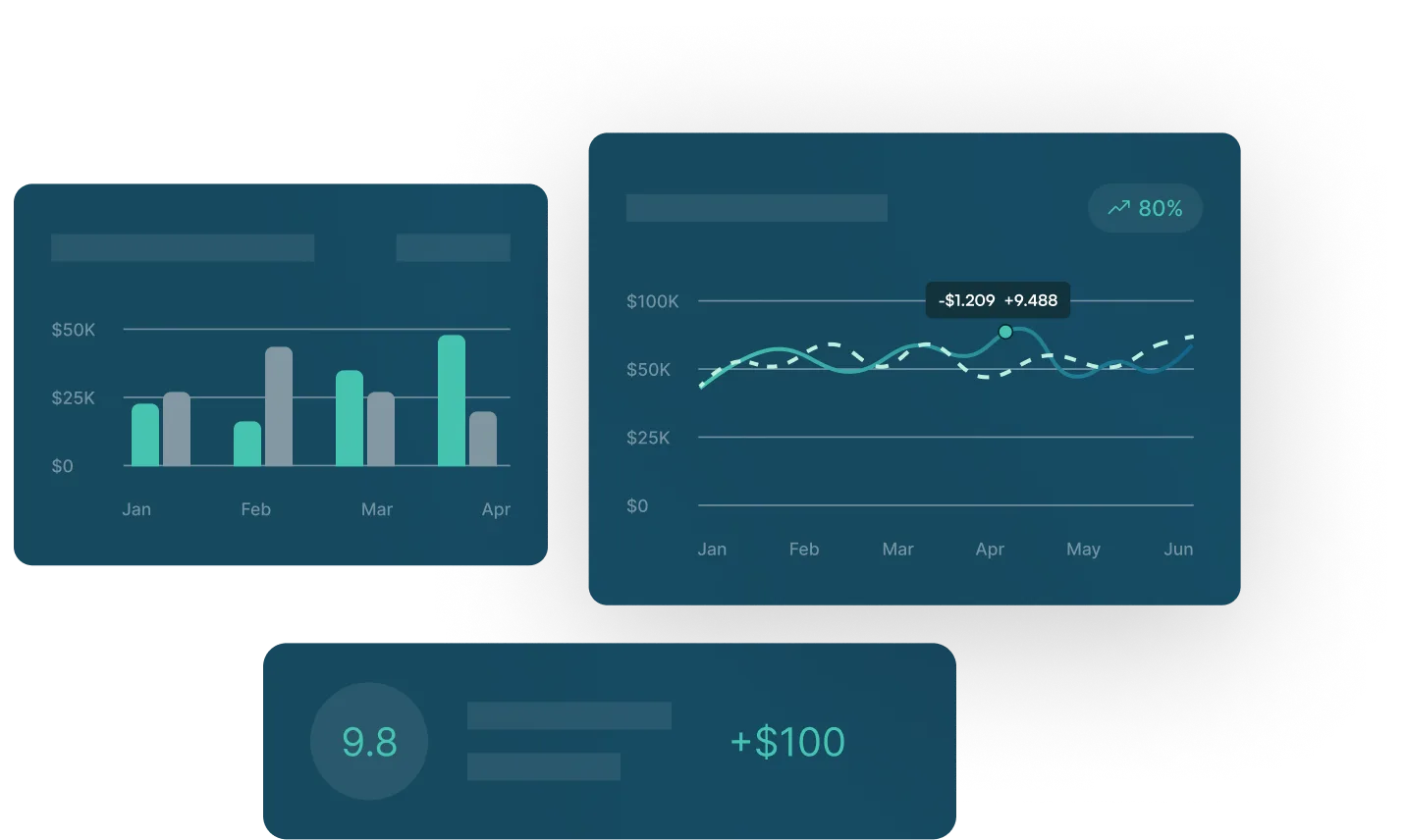


























.png)

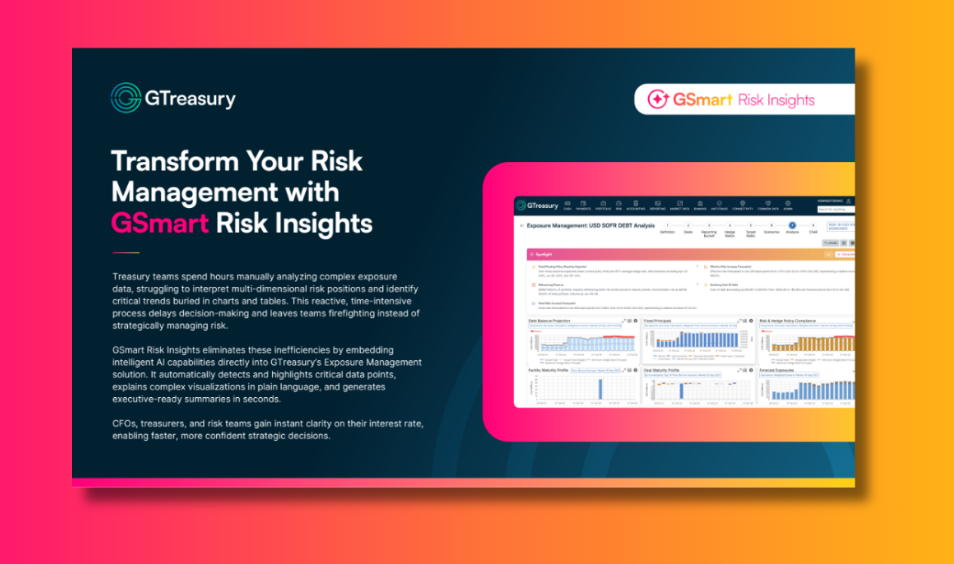
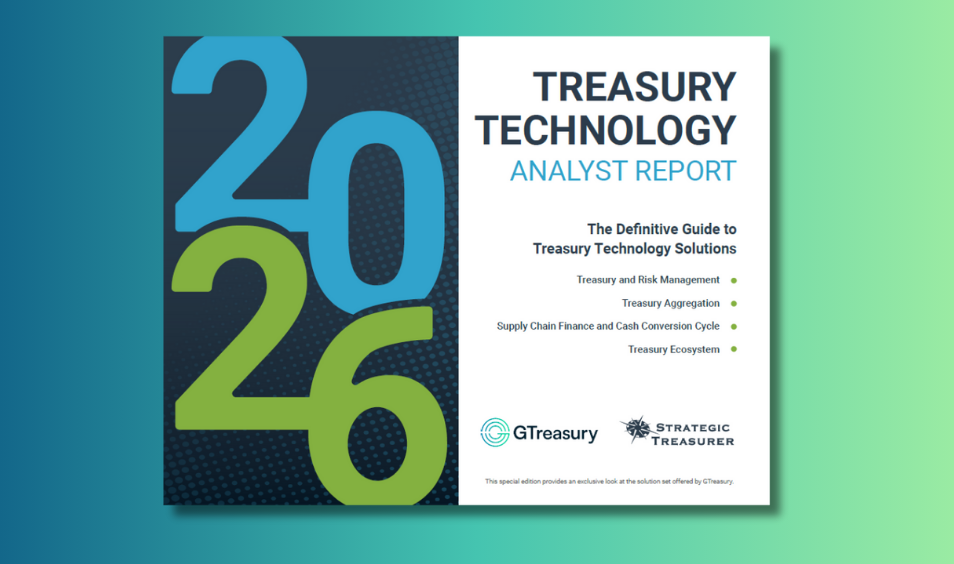




.png)
.png)













.png)

.png)


















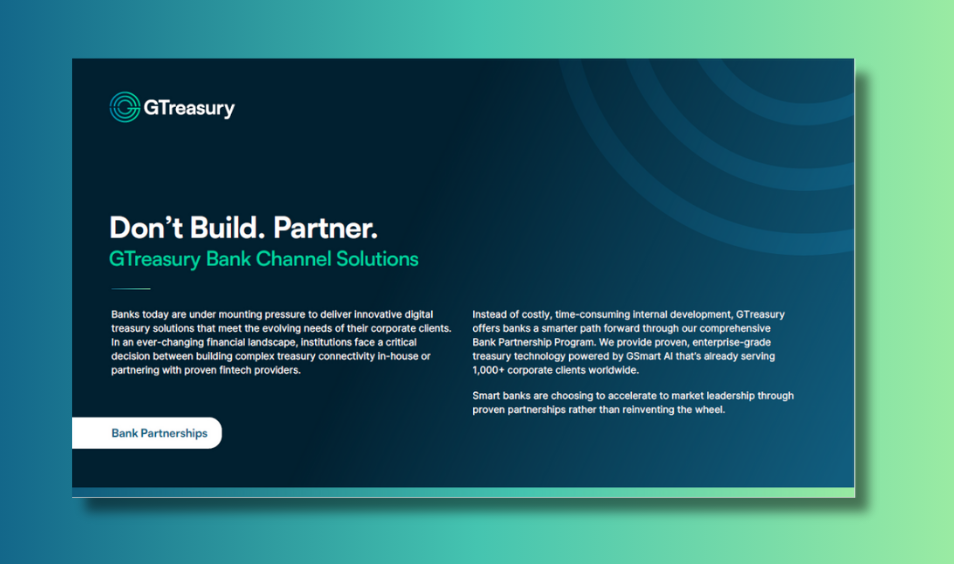

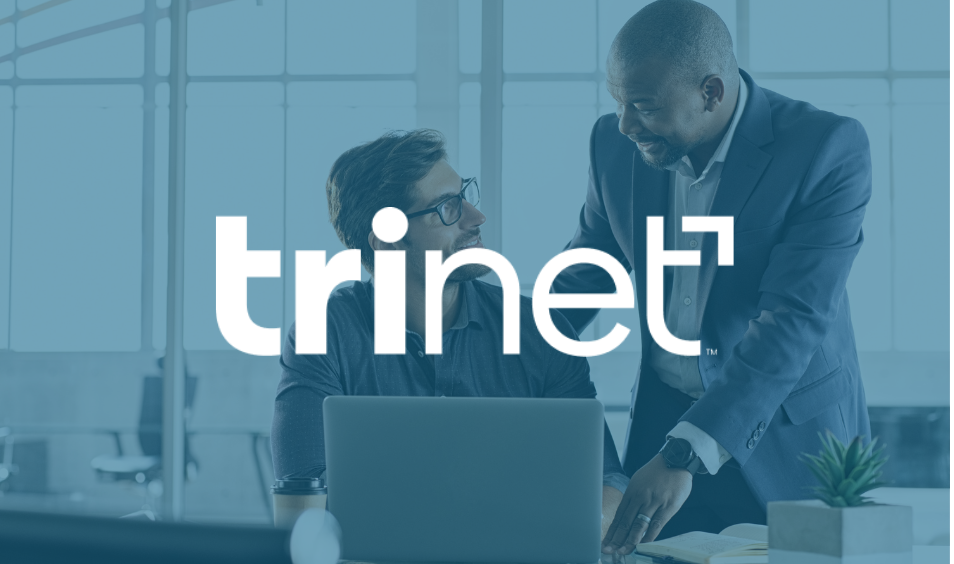

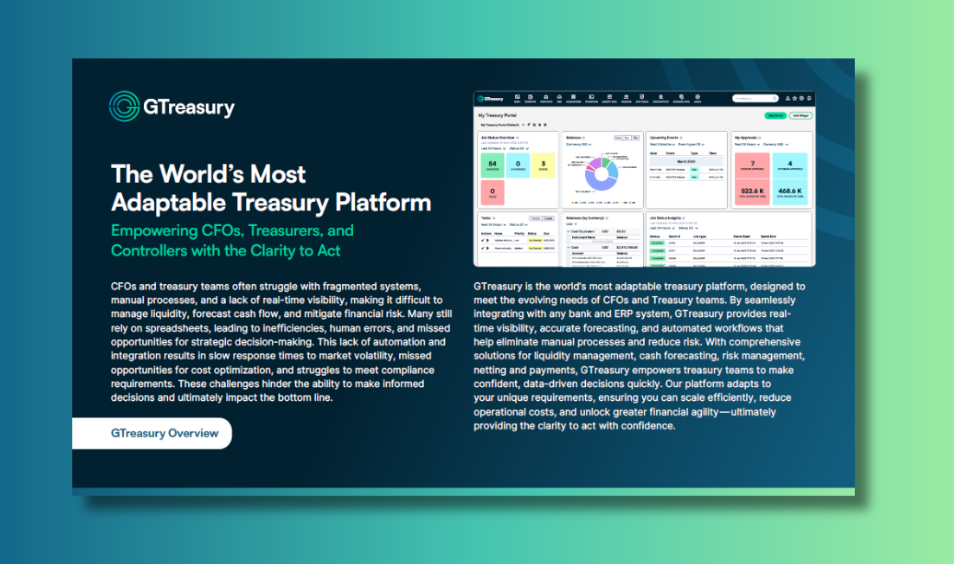
.png)




%404x.png)









